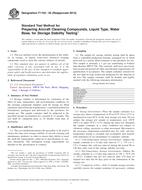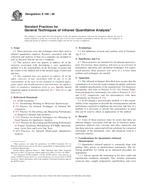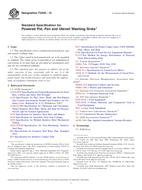1.1 This practice covers the evaluation and subsequent reporting of uniaxial strength data and the estimation of probability distribution parameters for advanced ceramics that fail in a brittle fashion. The failure strength of advanced ceramics is treated as a continuous random variable. Typically, a number of test specimens with well-defined geometry are failed under well-defined isothermal loading conditions. The load at which each specimen fails is recorded. The resulting failure stresses are used to obtain parameter estimates associated with the underlying population distribution. This practice is restricted to the assumption that the distribution underlying the failure strengths is the two-parameter Weibull distribution with size scaling. Furthermore, this practice is restricted to test specimens (tensile, flexural, pressurized ring, etc.) that are primarily subjected to uniaxial stress states. Section 8 outlines methods to correct for bias errors in the estimated Weibull parameters and to calculate confidence bounds on those estimates from data sets where all failures originate from a single flaw population (that is, a single failure mode). In samples where failures originate from multiple independent flaw populations (for example, competing failure modes), the methods outlined in Section 8 for bias correction and confidence bounds are not applicable.
1.2 Measurements of the strength at failure are taken for one of two reasons: either for a comparison of the relative quality of two materials, or the prediction of the probability of failure (or, alternatively, the fracture strength) for a structure of interest. This practice will permit estimates of the distribution parameters that are needed for either. In addition, this practice encourages the integration of mechanical property data and fractographic analysis.
1.3 This practice includes the following:
| Section | |
| Scope | 1 |
| Referenced Documents | 2 |
| Terminology | 3 |
| Summary of Practice | 4 |
| Significance and Use | 5 |
| Outlying Observations | 6 |
| Maximum Likelihood Parameter Estimators for Competing Flaw Distributions | 7 |
| Unbiasing Factors and Confidence Bounds | 8 |
| Fractography | 9 |
| Examples | 10 |
| Keywords | 11 |
| Computer Algorithm MAXL | X1 |
| Test Specimens with Unidentified Fracture Origins | X2 |
1.4 The values stated in SI units are to be regarded as the standard.
Product Details
- Published:
- 06/01/2005
- Number of Pages:
- 19
- File Size:
- 1 file , 350 KB


